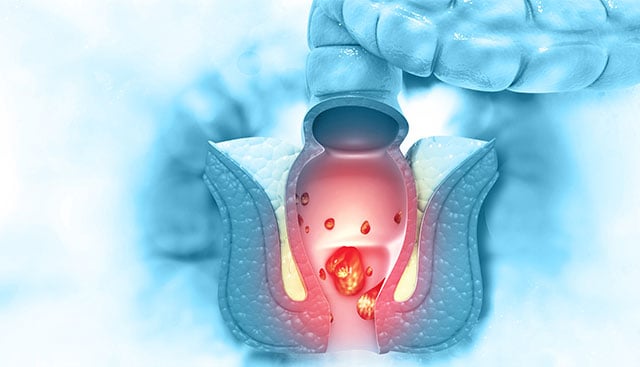
Q&A: Dr. Al-Roubaie Discusses Hemorrhoid Embolization Procedure in Treating Internal Hemorrhoids
Dr. Mustafa Al-Roubaie is an expert interventional radiologist who recently joined the Department of Diagnostic Imaging and Interventional Radiology at Moffitt Cancer Center. Dr. Al-Roubaie specializes in a variety of novel minimally invasive procedures that can tremendously improve a patient’s quality of life. His unique skills include treating internal hemorrhoids through a procedure called hemorrhoid embolization.
Radiology at Moffitt Cancer Center. Dr. Al-Roubaie specializes in a variety of novel minimally invasive procedures that can tremendously improve a patient’s quality of life. His unique skills include treating internal hemorrhoids through a procedure called hemorrhoid embolization.
We sat down with Dr. Al-Roubaie to learn more about his clinical interests and what he plans for the future of interventional radiology at Moffitt.
What’s an internal hemorrhoid and what are the symptoms?
Hemorrhoids are a common rectal disease that affects millions of people around the world. The primary symptom of internal hemorrhoids is bleeding with bowel movements. In most people, this resolves with lifestyle modifications and topical medicines. But in many patients, bleeding can go on for months or even years. The degree of bleeding can range from a daily nuisance to a life-threatening hemorrhage requiring blood transfusions. This is especially problematic in patients who take blood thinners, or patients who have low blood counts from cancer and/or chemotherapy.
How does an internal hemorrhoid form?
The vascular network supplying the rectum can become weakened and dilated as we age, resulting in large outpouchings of these blood vessels; they're termed hemorrhoids. Chronic constipation, straining with bowel movements and genetics are the main causes.
Explain how the hemorrhoid embolization procedure works. What’s the recovery time?
This is a quick outpatient procedure that is considered very low risk. After sedating the patient, we puncture the femoral artery in their groin. Then through that needle access, we guide an intravascular device called a microcatheter into the arteries feeding the hemorrhoids; all under image guidance. After we block those arteries using tiny metallic coils, we take out the catheters and put a bandage on the groin. It takes about one to two hours, followed by a one-hour recovery. We ask the patients to take it easy at home for one day and then they can resume all their normal activities.
How does a patient benefit from receiving a hemorrhoid embolization procedure vs. standard surgery?
Surgery is considered the definitive management for bleeding internal hemorrhoids and is very effective. However, it’s considered a last resort due to its significant recovery; about one month of rectal pain and bleeding as the area heals. Surgery also requires general anesthesia. Anoscopy with rubber band ligation is a common and fairly effective treatment for internal hemorrhoids typically performed in the office setting but is associated with significant discomfort. Embolization on the other hand is not associated with discomfort or pain and is linked to great outcomes; about 75% of patients have no bleeding one year after the procedure.
What do you envision for the future of interventional radiology at Moffitt?
Moffitt is truly on the cutting edge of cancer treatment. In my short time here, I’ve seen patients receiving highly customized and fine-tuned interventions, beyond the level of expertise found at most other centers. Patients are benefiting and the advancement of cancer treatment will continue to evolve here. The team of healthcare providers and researchers in this department is incredible and devout. We’re hoping to expand the services offered to our patients and the Tampa community at large to encompass all aspects of their health needs, including improvements in their quality of life. Hemorrhoid embolization is just one example of this holistic approach to patient care.
If you'd like to refer a patient to Moffitt Cancer Center, complete our online form or contact a physician liaison for assistance. As part of our efforts to shorten referral times as much as possible, online referrals are typically responded to within 24 - 48 hours.
